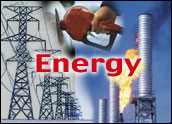
Every technology in business uses energy and has a carbon footprint — from the lights in the ceiling to the data center they illuminate.
“Green IT can mean anything from energy-efficient products to easily recycled products,” John Pflueger, principal environmental strategist at Dell, told TechNewsWorld. “While data center customers have, until recently, strictly defined greenness through energy efficiency, they are now showing a lot of interest in other, related issues, such as greenhouse gas emissions and water consumption. Other green IT topics, such as materials management and waste management, are more important in the consumer and business client space.”
Determining the size of this footprint, however, is not just a matter of guesswork. There’s a science to assessing the “greenness” of the technologies used in business.
“We’ve come a long way over the last few years in assessing and managing IT energy efficiency,” Elisabeth Stahl, chief technical strategist for IBM’s Systems and Technology Group, told TechNewsWorld. “Tools are getting more sophisticated and integrated.”
Why Assess?
Saving energy is good for the Earth, but it’s also good for the bottom line. Green assessment is the first step toward both goals.
“Nearly every day, companies grapple with new business requirements and economic pressures to glean more data, more workloads, and more capacity per dollar invested in labor, floor space, energy and technology,” said Stahl. “Should businesses assess their greenness? On one hand, now that energy is no longer just a cheap commodity, businesses can reduce expenses significantly. On another, it’s just the right thing to do.”
There are multiple forces, both internal and external, pushing businesses to assess their energy usage. Customers, investors, current and potential employees, the media, and many others are all looking for detailed information about how green the businesses they deal with actually are.
“Companies today are being asked — or, in some cases, pressured — to be more accountable and transparent about their environmental activities, commitments, achievements, and impacts,” Joel Makower, chairman and executive editor of GreenBiz Group, told TechNewsWorld.
“Beyond that, executives are recognizing that measuring, tracking, and reducing environmental impacts leads to other sources of business value, from cost cutting to attracting and retaining talent,” he said. “Doing a green assessment is just one step in being a well-managed company.”
Methods and Techniques
Once a business decides to assess its energy usage, many options are available.
“There are different levels of assessment,” explained Makower. “For starters, there’s the basic tracking of inputs and outputs: how much energy, water, materials, and other resources a company is using, normalized to output. These are baseline assessments that can provide an ongoing basis for making and measuring improvements.
“Beyond that,” he continued, “are more sophisticated dashboards that provide real-time or near-real-time monitoring of all processes, facilities and materials flows. Clearly, these are intended for more resource- and energy-intensive industries.”
How to do this assessment depends on what the business is assessing, what information it needs from the assessment, and how it’s going to use this information. The assessment can be done with software, built-in monitoring devices, or teams of specialists brought in as part of the assessment process.
“There is a plethora of tools and methodologies out there now to assess your IT energy efficiency — everything from actual meters on your servers to software tools running on your systems, to thermal visualization of your entire data center,” noted Stahl. “Sometimes a business might need to consolidate and virtualize servers — sometimes just add a special pillow to redirect air flow.”
Tools such as IBM Systems Director and Tivoli products can monitor, manage and optimize energy usage, and many IT vendors have a specific energy efficiency services team that can evaluate energy usage, said Stahl. IBM, for instance, offers Systems Agenda experts — systems lab engineers who work with clients to analyze IT efficiency.
“There’s a large and growing list [of assessment tools], from basic spreadsheets to sophisticated and pricey software suites,” said Makower. “The products also range widely in what they do and cover — from environmental compliance solutions to life-cycle assessment tools, to more proactive software solutions.”
These tools come from a wide range of companies, both large and small, including CA Technologies, IBM, Johnson Controls, SAP, AdvantageIQ, Credit360, and many others, noted Makower. In short, choosing an energy assessment tool or service is not a one-size-fits all proposition; businesses must assess their needs before they can begin to assess their energy usage.
“There’s simply no way to recommend any one solution,” said Makower. “There is a broad range of solutions designed to meet a broad range of needs.”





















































